The entrance to your home is likely the first and maybe the only impression that visitors or passers-by may have of your home. Your porch should represent your personal tastes and style and those of your family and the rest of your home. Choosing the right material to cover your porch floor is an important decision that shouldn't be taken lightly. Because it is such a big decision, we have searched multiple sources to bring you a concise but thorough selection of options for the best material for your porch flooring.
Porch flooring comes in a wide array of choices depending on the appearance that you want, location of your porch, and foundation. Because there are so many available options in porch flooring, you should consider the climate in your location along with the look that you are trying to achieve. The best porch flooring options that we found are:
- Concrete
- Wood
- Brick
- Composite lumber
- Textured stone
- Bluestone
- Brownstone
- Limestone
- Mosaic tile
- Deck tile
- PVC
- Ceramic wood look tile
Deciding on a material for your porch floor is only one of the many decisions you will likely have to make during your porch flooring project. Is porch flooring expensive? How much slope should a porch floor have? Can you put carpeting on a porch floor? Can you put vinyl flooring on a porch? We will answer all of these questions and discuss other closely related topics, just keep reading.
![A brownstone brick apartment building with a red front door with metal stair railing, What Is The Best Material For A Porch Floor? [A Complete Guide]](https://uooz.com/wp-content/uploads/2021/05/What-Is-The-Best-Material-For-A-Porch-Floor-A-Complete-Guide.png)
Concrete
Pros
One of the oldest and most popular materials for porch floors, concrete is the perfect mixture of sand and cement. Concrete is highly durable despite being one of the cheaper options for porch flooring and can last for decades without shifting. Maintenance of a concrete porch is fairly minimal. Concrete, once dry, is waterproof and can withstand pretty much any climate.
Cons
There are also some traits of concrete that you may want to consider before deciding that concrete is the right material for your porch. Although concrete is durable, it can fade easily, is hard to repair, and next to impossible to match if a section needs repair. Concrete can become slippery, especially when wet, posing a potential safety hazard. Concrete can also be cold in cool weather and hot in warmer temperatures.
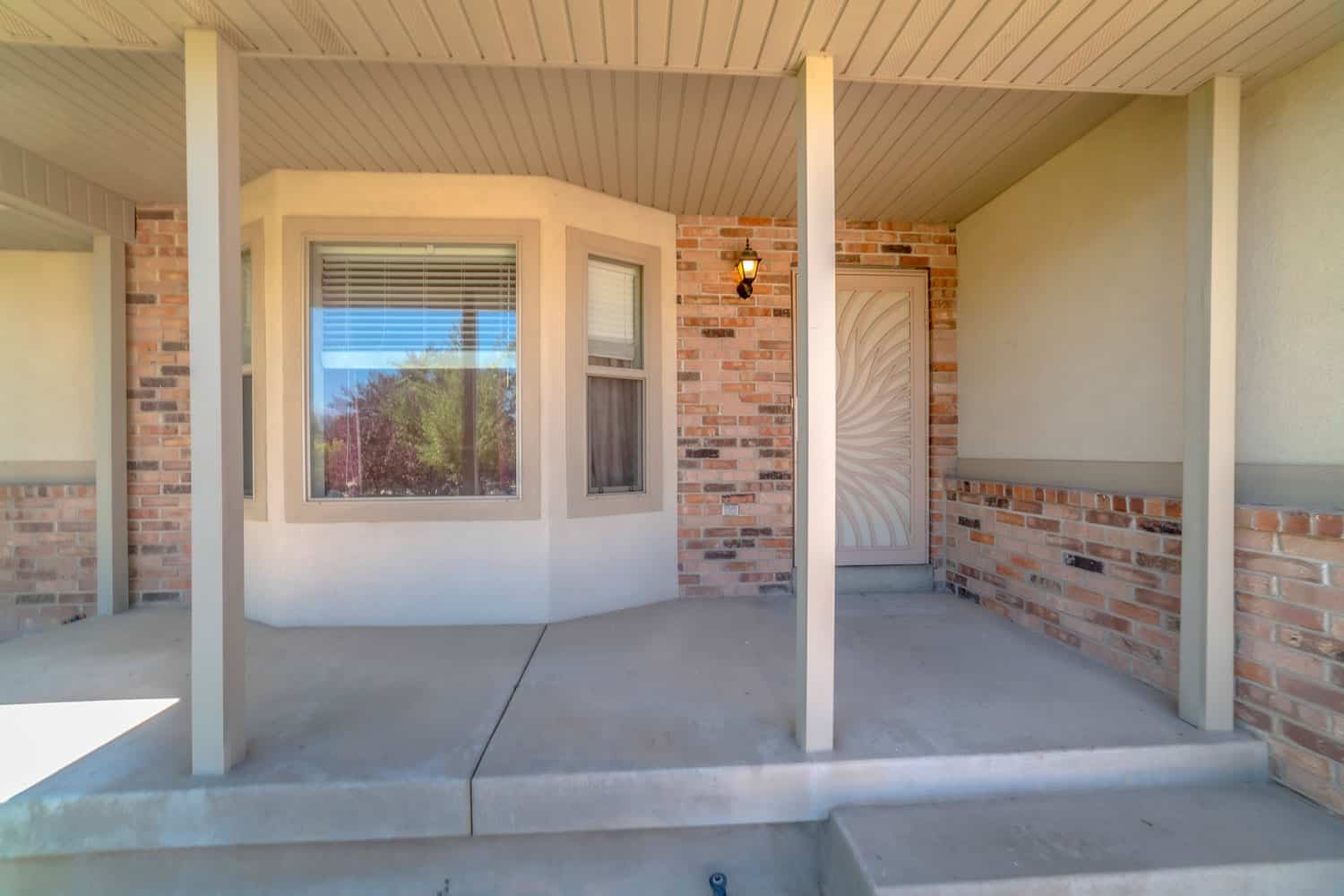
Wood
Pros
Natural wood is a popular choice in porch flooring. Inexpensive and warm-colored natural woods such as fir, cedar, or mahogany are among the more popular woods used to cover porch floors. Regardless of the type of wood you choose, the wood should be treated with polyurethane or another kind of finish for use outdoors to make your wood waterproof and weather resistant.
Cons
Wood floored porch does require periodic maintenance sealing and can be slippery when wet. Even with the best sealers, wood fades in color over time and can wear out quicker if the sealer isn't maintained periodically. Wood can also splinter if not properly treated.
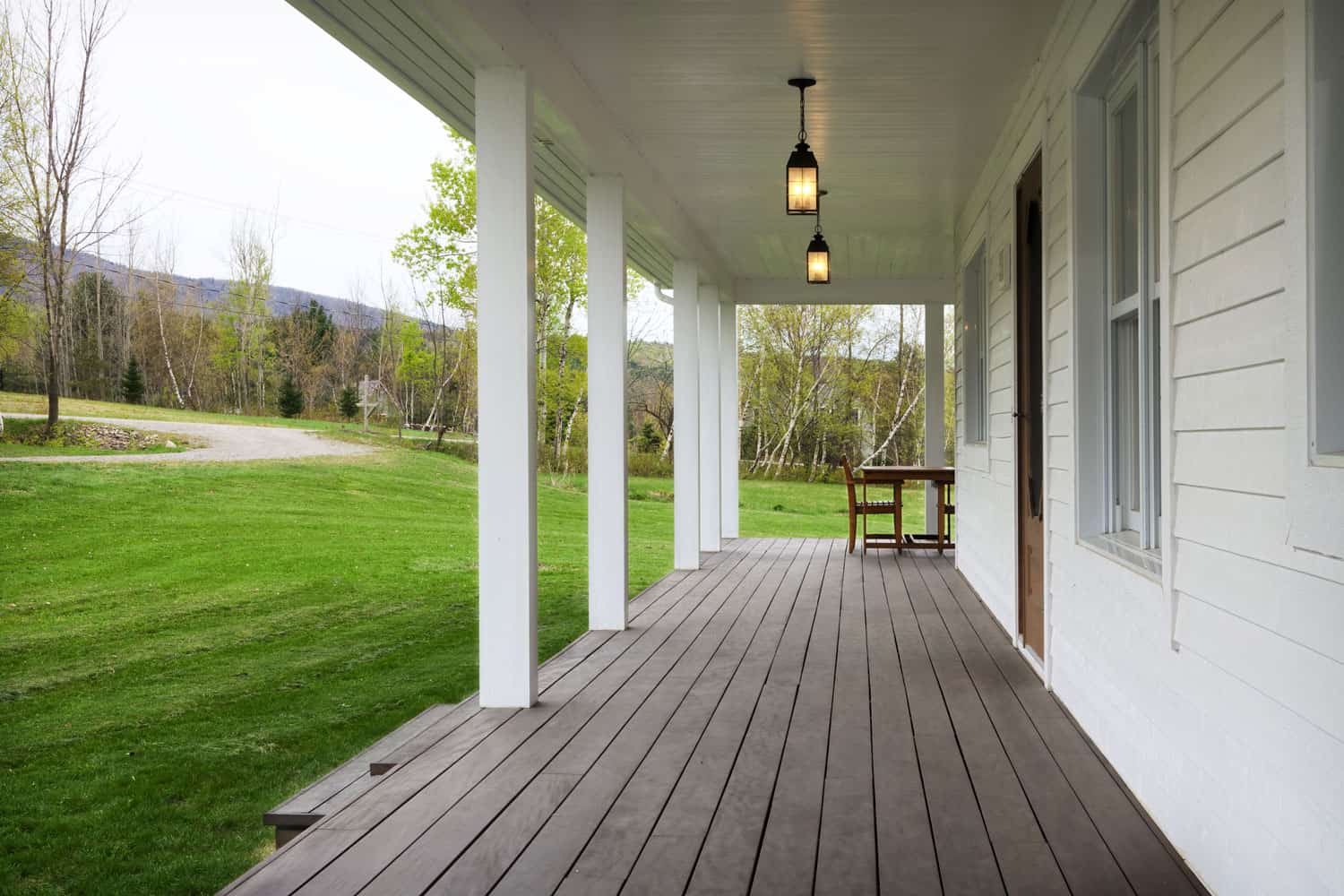
Brick
Pros
For an urban feel with minimal upkeep, consider using brick for the surface of your porch floor. This easy-to-clean hard surface is applied directly to a concrete slab porch with thinset mortar. Traditional brick can be too heavy for many flooring frames, so clay brick pavers are often used instead. Acting as a veneer for your porch floor, clay brick pavers are thinner versions of traditional brick, usually about 1/4 inch thick, with the look of authentic brick.
Cons
Because brick is porous, it is susceptible to stain unless a sealer is applied to the brick's surface, sometimes causing the surface to become slicker. Brick is usually made of earthy colored clay, so this flooring choice can be hard to decorate around, but it can be incorporated into a room's look, giving it a rustic feel. Floors made of brick are very hard and cold, especially in cooler weather.
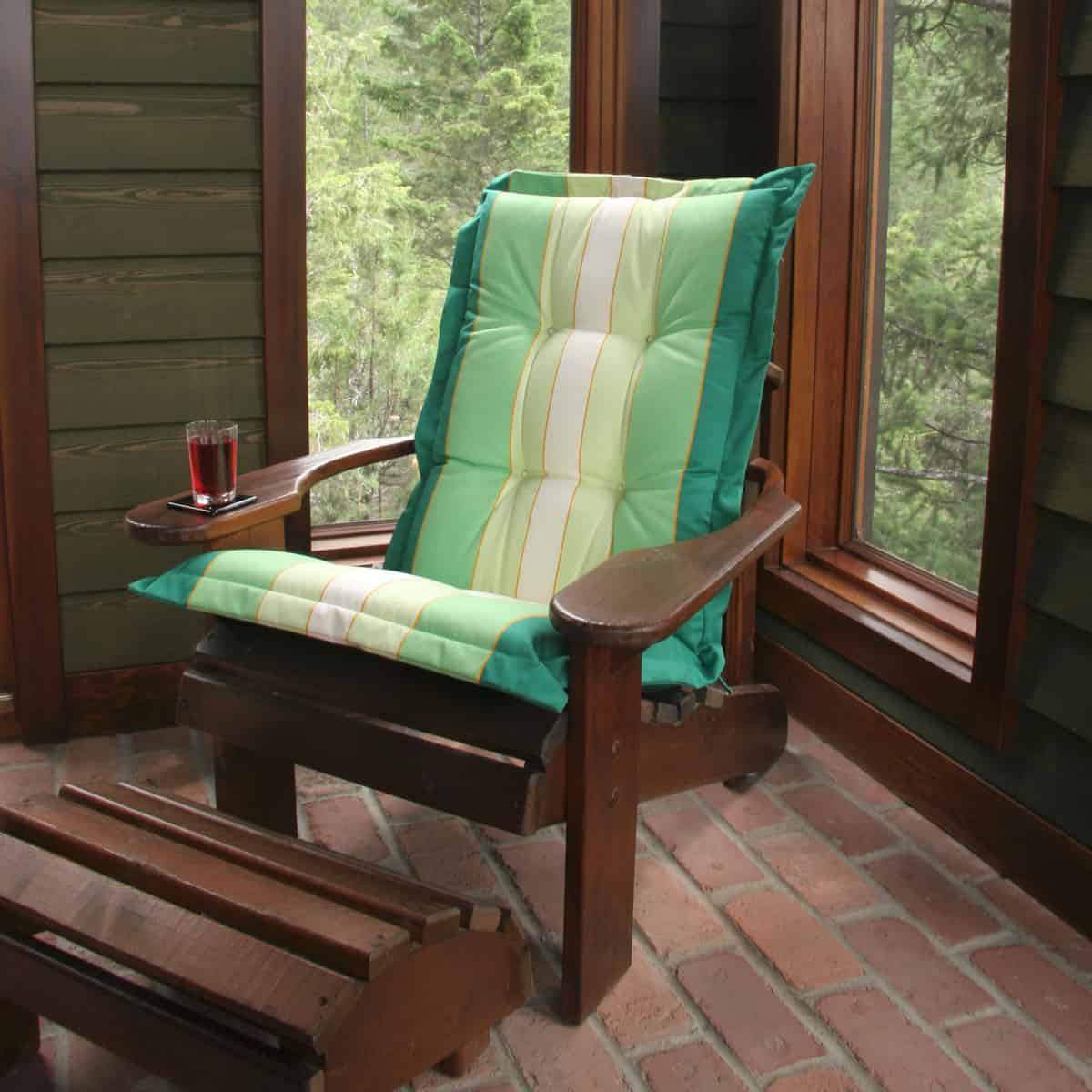
Composite lumber
Pros
Sometimes referred to as wood alternative or synthetic decking, wood polymer composite is a lightweight, durable porch flooring option. Often used to cover the surface of decks or walkways, composite lumber has the natural look of wood without the splintering, fading, or cracking of actual hardwood. Composite lumber is stainproof and waterproof and can last for 25 to 30 years, sometimes longer but tends to look less natural.
Cons
Composite lumber floors are made from wood byproducts and plastics for a wood-like finish. While composite lumber is available in various colors, the flooring material may not look as natural as actual hardwood. Some composite lumber can also become slippery when wet.
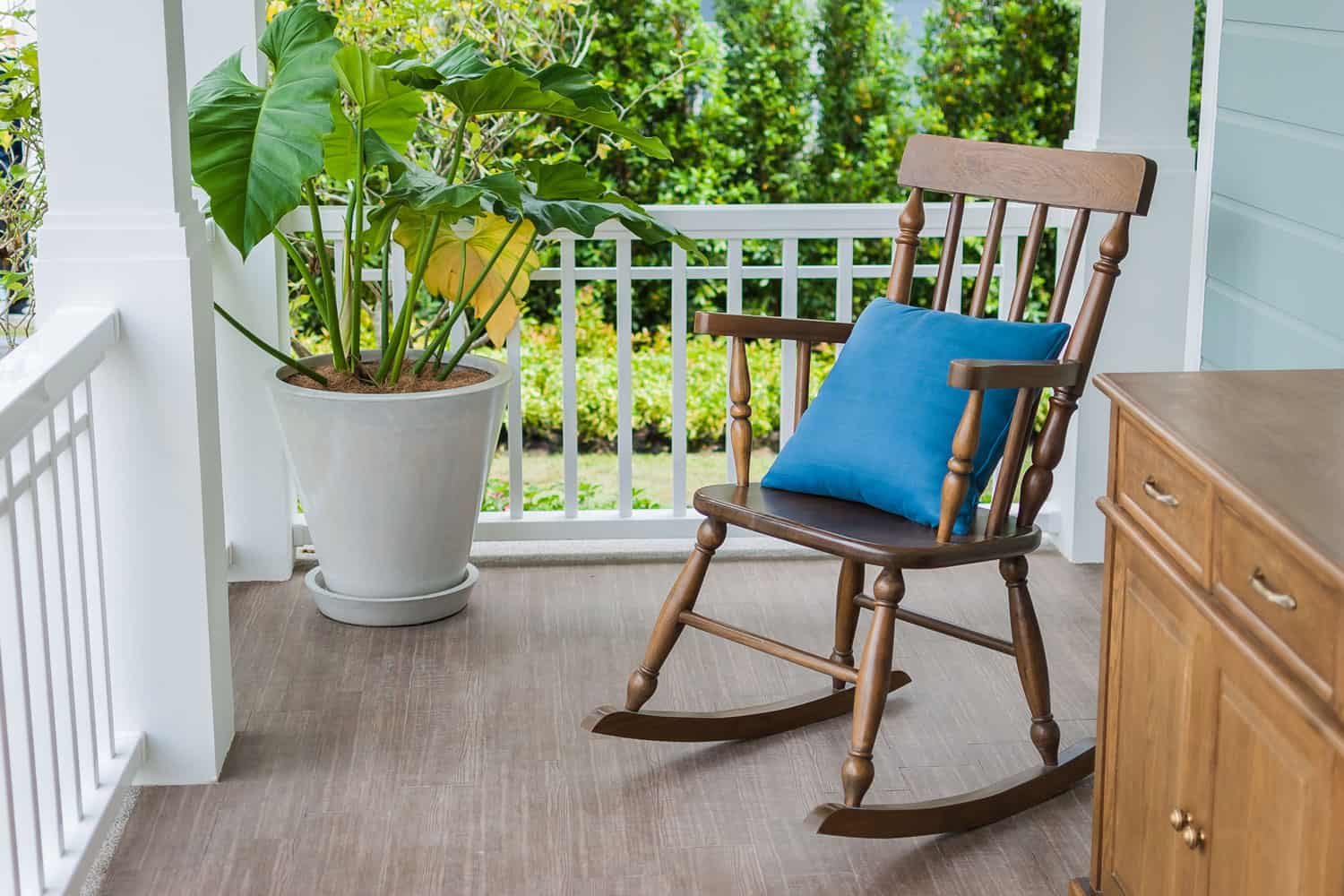
Textured stone
Pros
Although textured stone is one of the more expensive porch floorings, it is well worth the extra cost for the wow-factor alone. Nothing beats the elegant look of natural stone. Textured stone is long-lasting and naturally waterproof. The mortar used in between the natural stone can become worn and cracked in about 5 - 10 years but can be repaired. Some textured stones commonly used for porch flooring include bluestone, brownstone, and limestone.
Cons
Because of the beautiful natural texture, some textured stone floors are more prone to collecting dirt and dust in the grooves that can be unsightly and difficult to keep clean.
Bluestone
As its name infers, bluestone is a stunningly beautiful stone known for its distinctive blue, grey, tan, and indigo colors. Bluestone is available in irregular stone pavers, large stone slabs, or pattern-cut shapes to create a wide variety of looks for your porch. The grey-blue shade used in the example below pairs beautifully with the home pictured's traditional style and crisp white color.
Brownstone
For a look commonly found in large urban areas like New York City, consider the use of brownstone pattern cuts to create a warm earthy look to your porch floor. The warm brownstone porch in the example below pairs perfectly with the white trim and brightly painted red door.
![A brownstone brick apartment building with a red front door with metal stair railing, What Is The Best Material For A Porch Floor? [A Complete Guide]](https://uooz.com/wp-content/uploads/2021/05/A-brownstone-brick-apartment-building-with-a-red-front-door-with-metal-stair-railing.jpg)
Limestone
This stone has been popular for building use since ancient times. Light and bright, limestone is a whitish-gray color that looks traditional and elegant. The limestone porch pictured in the example below is a beautiful vibrant accent to the grey stone on the walls of this home.
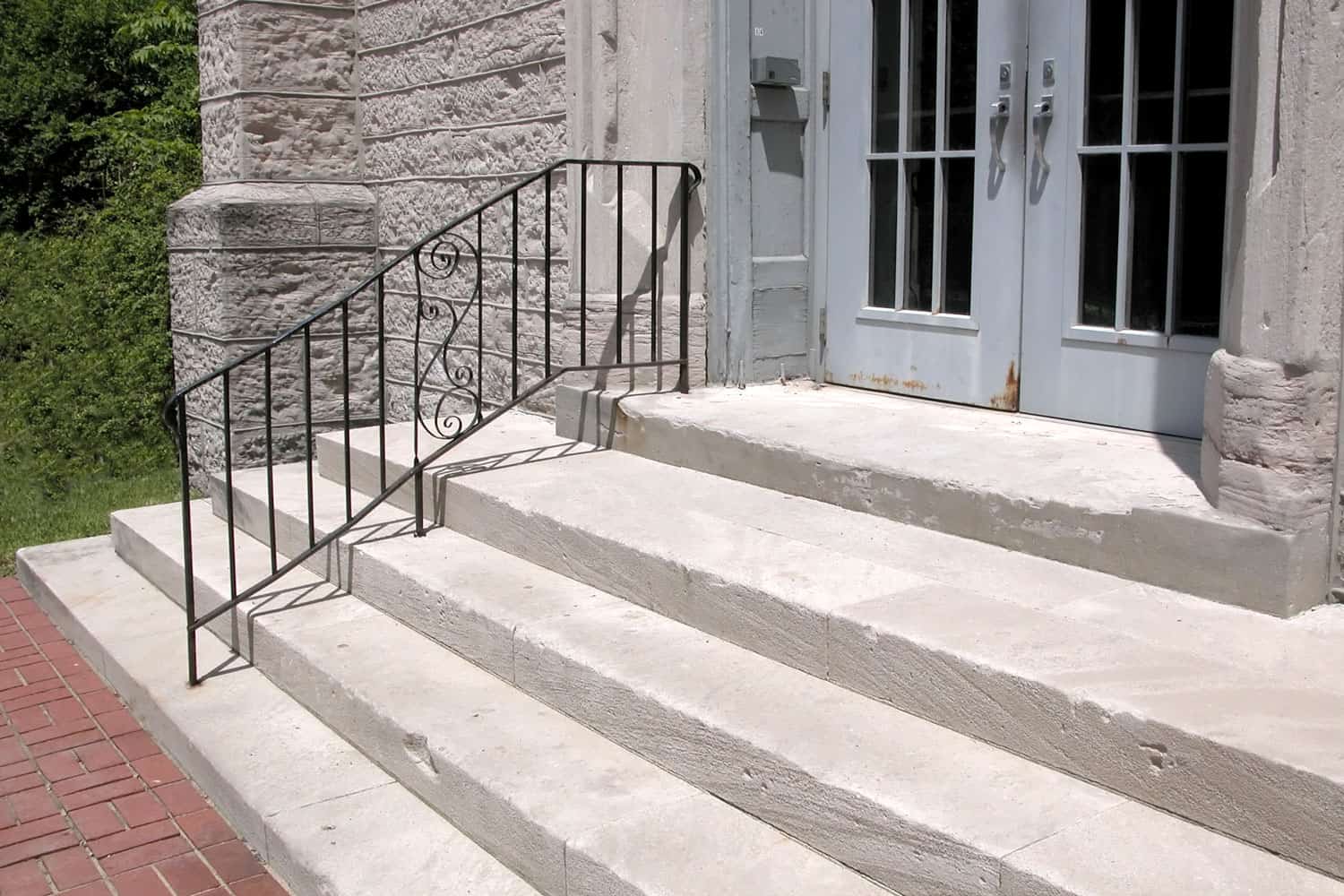
Mosaic tile
Pros
Colorful and vibrant, mosaic tile can add character to any porch floor. Beautiful patterns can be created using different combinations of mosaic tiles, adding an artistic flair to any home. This sophisticated and elegant flooring option does come with a significant cost, though.
Cons
One of the more expensive options in porch flooring, mosaic tile, can also be challenging to maintain, especially in high traffic areas.
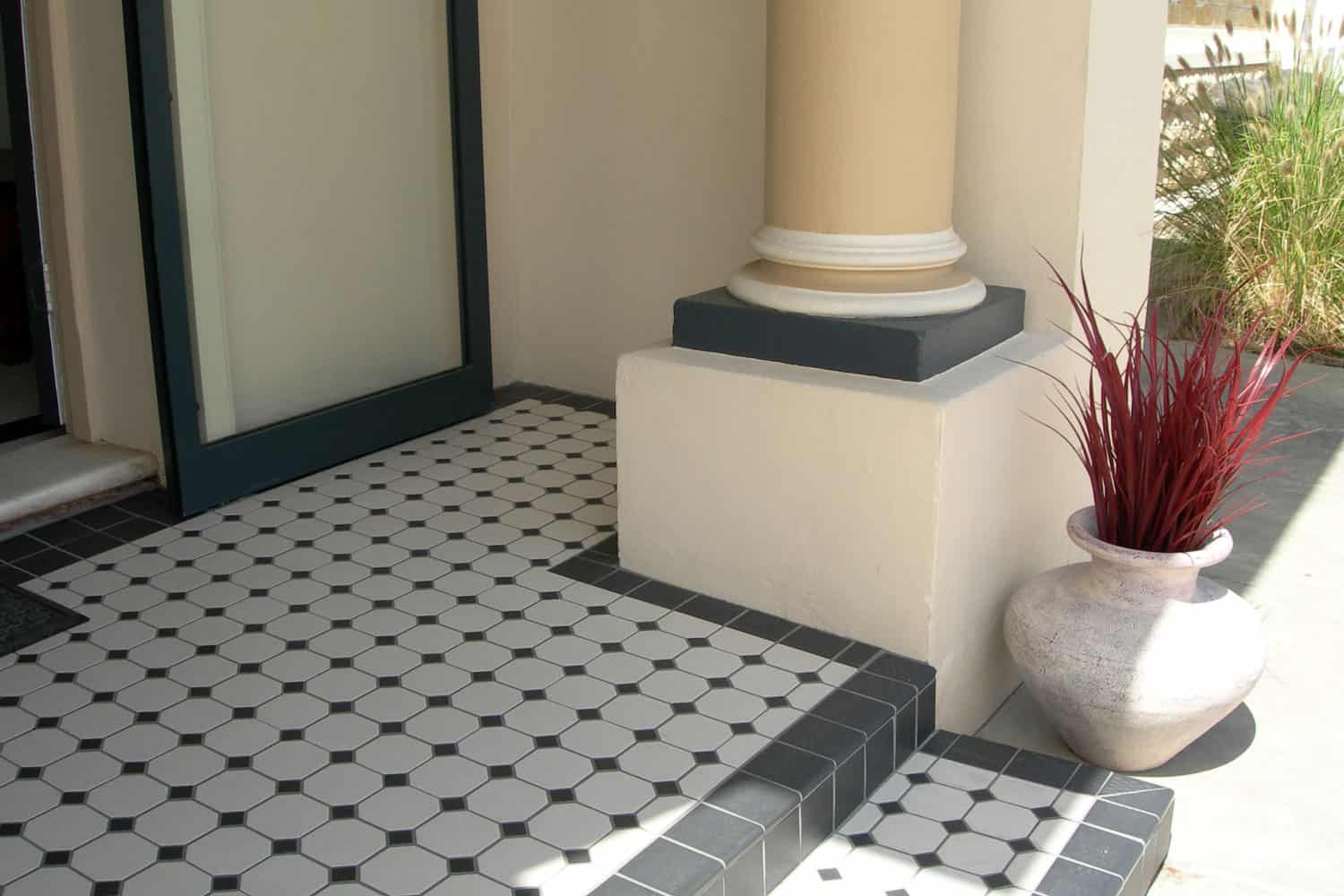
Deck tile
Pros
Quick and easy to install, deck tile is a simple solution to the porch flooring. Most deck tiles are made to look like wood but are actually just a mixture of bits of wood and blends of other materials that make deck tiles both waterproof and durable. Eco-friendly versions of deck tiles are also an option.
Deck tiles can be applied directly over your existing floor. Tiles can be removed individually for easy repair or replacement if necessary. It is recommended to purchase a couple of extra tiles to have on hand to keep your flooring looking like new. Deck tiles are not glued down, so they can be moved for temporary situations, making them an excellent option for renters.
Cons
The fact that deck tiles can be temporary can be a drawback to some homeowners. Deck tiles don't add much value to a home, and the visible seams aren't appealing to some.
PVC
Pros
Polyvinyl chloride or PVC is a durable material that makes an excellent flooring choice for your porch. PVC comes in many colors and styles, making PVC porch flooring an option for every taste. PVC flooring is easy to install, low maintenance and is one of the most cost-efficient options in porch flooring.
Cons
PVC flooring can be more susceptible to scratching and can fade over time, especially in the sunlight.
Ceramic wood look tile
Pros
The look of wood with tile durability, ceramic wood look tile is the best of both worlds. Ceramic wood look tile is the result of high-quality inkjet printers printing detailed wood grain on the tile. With ceramic wood look tile, you get the look of hardwood without the risk of scratches and scrapes.
Cons
Ceramic wood look tile can be colder and harder under your feet and more slippery when wet. Because of the printed detail, ceramic wood tile can be difficult to lay out in a way that looks natural.
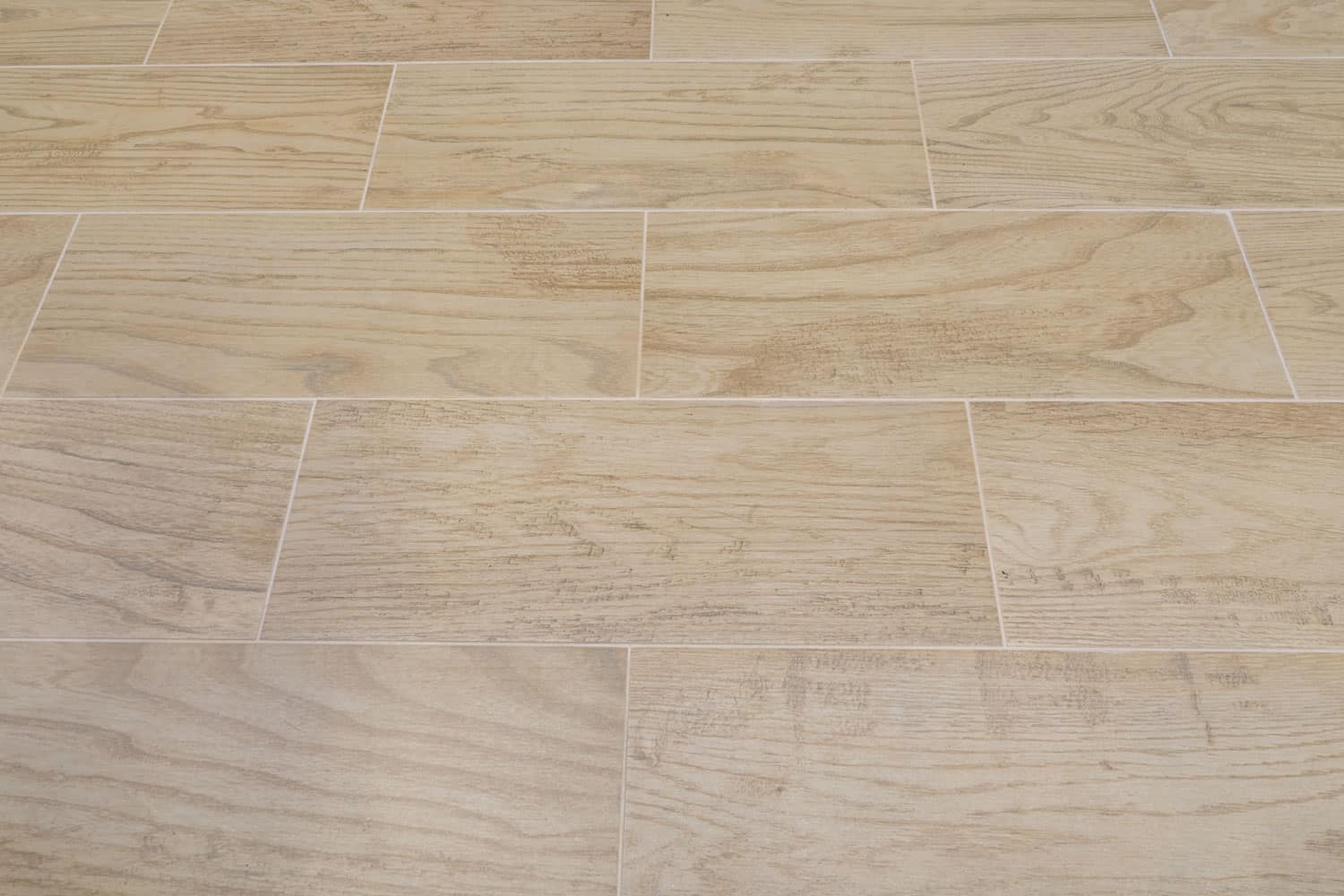
Is porch flooring expensive?
Depending on the look that you are trying to achieve, porch flooring can get quite expensive. Concrete is by far the cheapest option of the porch flooring options that we discussed. High-end wood flooring is the most costly option for porch flooring that we have listed. The approximate prices for the other materials that we discussed are:
Concrete: $2-8 per square foot
Wood: $4-30 per square foot
Composite wood: $4-13 per square foot
Textured stone: $2-10 per square foot
Deck tile: $3-20 per square foot
Mosaic tile: $12-20 per square foot
PVC: $4-6 per square foot
How much slope should a porch floor have?
Standing water from rain can be detrimental to your home's foundation. For this reason, a slight slope should be built into porches so that the water runs off. The recommended slope for a porch floor is 1/4 inch per foot of slope but might be slightly more or less depending on the conditions in your area.
Can you put carpeting on a porch floor?
Not only can you put carpeting on a porch floor, but indoor/outdoor carpet can increase the comfort or coziness of your porch or deck and comes highly recommended for its ease of installation and maintenance. It is easy to clean and can be installed with minimal skills or tools. If applying carpeting to a deck or a wooden surface, be sure to use a sealant on the wood before using indoor/outdoor adhesive or two-sided tape to protect it while the carpet lays on top.
Can you put vinyl flooring on a porch?
Vinyl flooring, while versatile and waterproof, should not be used in any area without temperature control. Because it is prone to swelling and cracking with changing temperatures, vinyl flooring is best left in an area of your home that is not subject to wide temperature changes.
Final thoughts
Your porch is an integral part of your home, representing your family's distinct tastes and style. Choosing the right flooring for your porch can set the tone for the entire front of your home. While there is no one choice for choosing porch flooring, we hope to have helped narrow down the list with the selection that we provided. Before you leave, here are some other articles that may be of interest to you:
